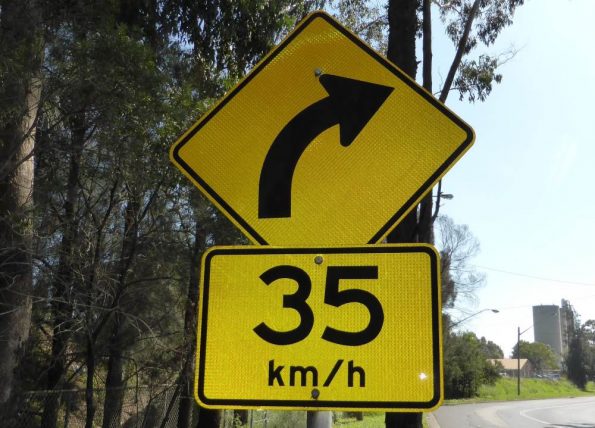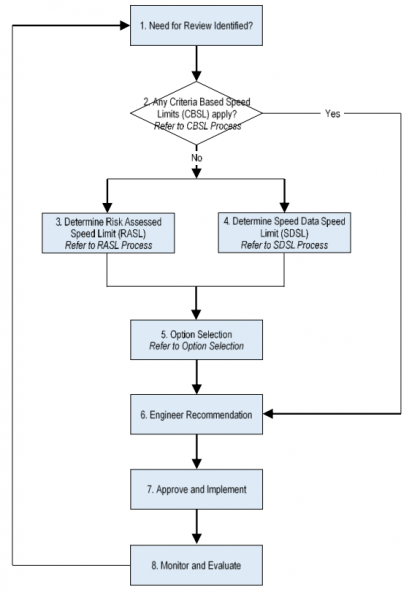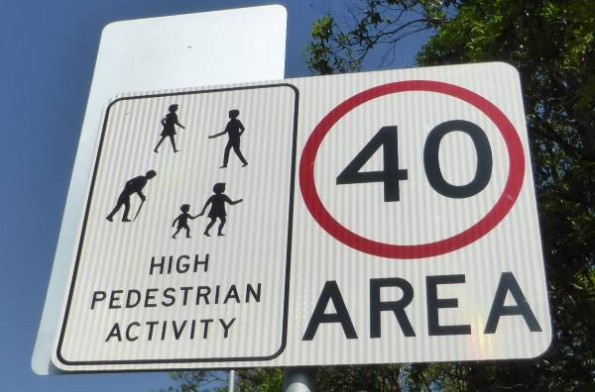Speed limits are chosen through a mixture of science, practicality and public expectation. Speed limits are frequently not a good indication of a safe speed on a particular stretch of road, so drivers still need skill to negotiate their way.
Recommended speed limits are negotiated and set by territory, e.g. VicRoads has a different set of criteria than Queensland’s Department of Transport and Main Roads which uses part 4 of the Manual of Uniform Traffic Control Devices.
A default urban and open road speed limit is always established. This is 50km/h and 100km/h respectively. These limits are legally enforceable without road signs, which avoids the need for excessive signage.
Speed zones are applied to discrete sections of road where the limit can be varied and signposted, or a limit might be variable based on electronic signage that responds to weather conditions. Note: these are different from advisory or suggested speed limits which are for one corner or set of corners.

If we take Queensland as an example, they set a standard procedure for establishing speed limits which involves engineers, a person who approves the implementation of any recommendations from a speed limit review (a ‘responsible officer’), a speed management committee and a speed limit review panel.
The speed limit review process looks at a road, determines whether a consistent speed limit is applicable due to it being relatively unchanging through its length and, if not, breaking it into homogenous segments which can be evaluated separately. There are minimum lengths for speed zones to avoid confusion among drivers and to reduce the number of signs. For example, a school zone has an absolute minimum length of 0.2km long while a 100km/h limit is a minimum of 2km long. Speed limits of 50km/h, 60km/h and 110km/h.
A process is followed when identifying the need for a speed limit review:

Criteria-based speed limits work through a set of questions to determine base risks, e.g. is the speed zone a shared zone or is it unsealed?
A risk-assessed speed limit is based on crash risk, infrastructure risk, environment (e.g. urban, semi-urban or rural) and road function (e.g. local street, collector street, trunk collector road, sub-arterial road or motorway).
Suggested speed limits are based on a matrix of the above risks.
Speeds will also be evaluated along with data of the mean speed drivers already are using for that street to determine whether they are appropriate.
While the process is quite scientific, there is room for variation and there are many factors that could contribute to the final decision, which we’ll look at now:
Accident rate: if a road has a high accident rate due to speeding, the speed limit may be reduced and traffic calming measures introduced pending other plans to reduce the risk. This might not decrease the overall number of accidents, but the basic laws of physics say that it will most likely reduce the severity.
Fuel economy: while not an explicit choice in individual road speed zones, speed limits have been used in the past to reduce fuel usage. Vehicle manufacturers tend to optimise their vehicles to get the best fuel economy at around 80km/h.
Road characteristics: along with the width and road surface, the sharpness of the bends and the number of driveways and adjoining roads will affect the safety of road users.
Road construction: as faster traffic means more wear and tear on the road, local authorities could reduce the speed limit to reduce maintenance costs.
Road user type: if the road has a heavy cycle presence, is near a school, has a high number of slow agricultural vehicles or has a large number of pedestrians, the limit may be reduced.

Noise: higher speeds mean more noise. Residents can exert pressure on local government to have speed limits reviewed based on whether the noise produced is a nuisance.
Driver and vehicle ability: overall speed limits are set based on the abilities of the average driver and the average vehicle. It’s not unusual for a reaction time to be two seconds, by which a vehicle travelling at 100km/h has covered 55m. Heavy vehicles can take a long distance to stop when the road surface is wet. Pedestrians need to be able to judge the approach speed of other vehicles.
